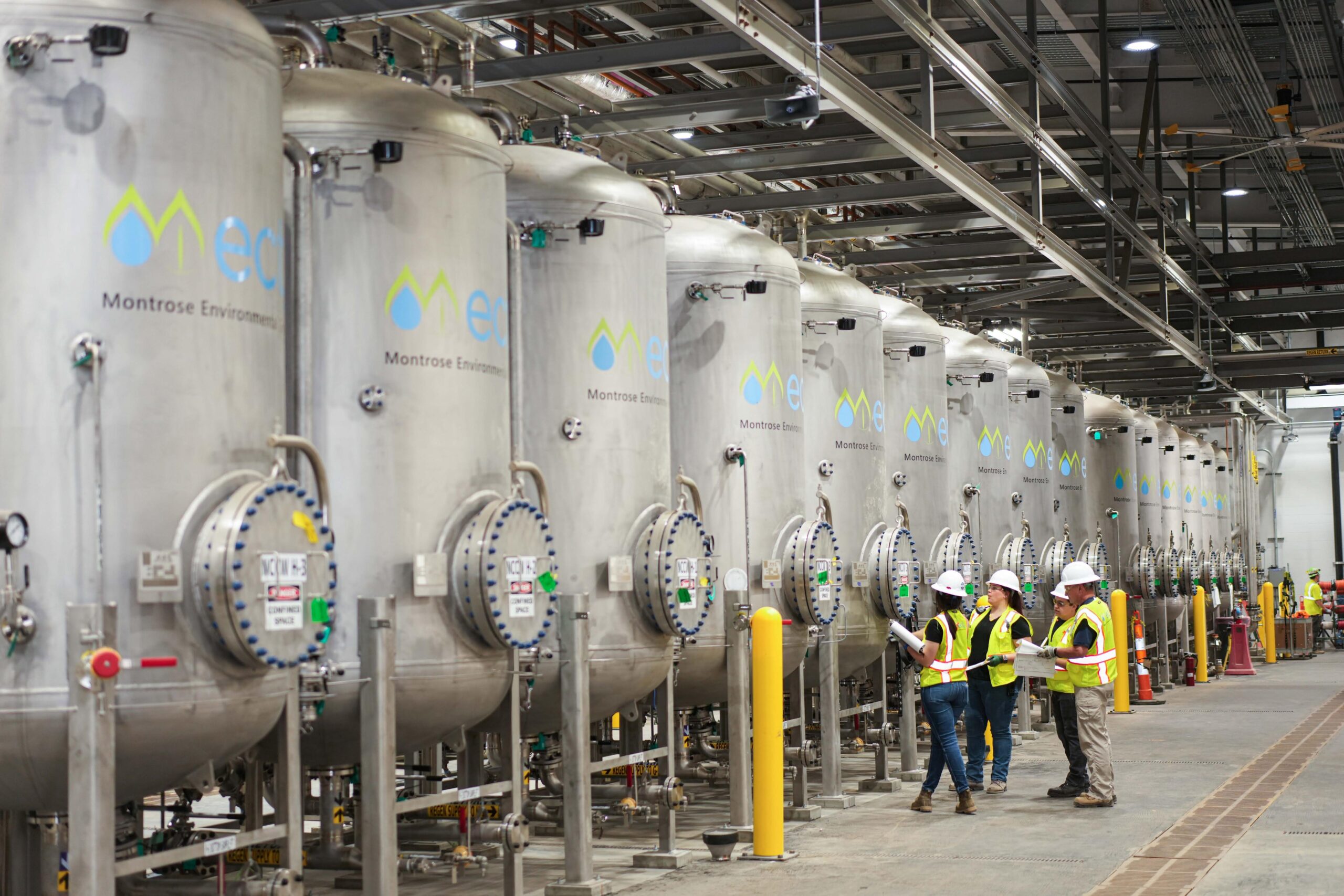The Role of PFAS Treatment in Restoring Polluted Water
Innovative PFAS Therapy Solutions for Safer Water
The boosting frequency of PFAS contamination in water supplies demands a critical evaluation of cutting-edge therapy solutions. Advanced filtering innovations and unique chemical therapies present promising methods for lowering these persistent contaminants. Additionally, emerging bioremediation methods provide a more lasting technique to taking on PFAS challenges. As governing frameworks remain to adapt, recognizing the effectiveness and scalability of these services becomes critical. What implications do these developments hold for public health and ecological restoration, and just how can stakeholders properly apply them in diverse contexts?
Introduction of PFAS Contamination
PFAS contamination has arised as a substantial environmental and public health and wellness problem. Per- and polyfluoroalkyl substances (PFAS) are a group of synthetic chemicals understood for their determination in the setting and body, leading them to be generally referred to as "for life chemicals." These substances have been commonly utilized in different industries, consisting of firefighting foams, water-repellent fabrics, and food packaging, primarily as a result of their water- and grease-resistant properties.
The extensive use PFAS has led to their detection in soil, water supplies, and even in the blood of people and animals. Studies have actually connected PFAS exposure to many health and wellness problems, including developing impacts in infants, immune system dysfunction, and various types of cancer. In addition, the ecological persistence of these compounds complicates their degradation and elimination, raising issues about long-lasting environmental impacts.
Regulative bodies are increasingly implementing rigorous standards to keep an eye on and lower PFAS degrees in drinking water and other environmental mediums. As understanding of PFAS contamination grows, it has actually come to be vital for areas and sectors to look for efficient therapy remedies to reduce exposure and safeguard public wellness.
Advanced Filtering Technologies
As the urgency to deal with PFAS contamination intensifies, progressed purification innovations have arised as a pivotal component in the removal efforts targeted at getting rid of these persistent chemicals from water resources. These innovations take advantage of innovative devices to properly target and capture PFAS substances, which are infamously immune to conventional therapy approaches.
One of the most encouraging approaches is making use of granular activated carbon (GAC), which adsorbs PFAS particles as a result of its high surface area and porous structure. This technique has been widely executed in both metropolitan and industrial setups, showing substantial decreases in PFAS focus. Additionally, ion exchange resins have gained grip, specifically designed to uniquely bind PFAS ions from water, therefore facilitating their removal.
Membrane layer purification modern technologies, such as reverse osmosis and nanofiltration, additionally show efficiency in PFAS removal by physically dividing pollutants from water - pfas management. These systems can accomplish high degrees of pureness, making them ideal for alcohol consumption water applications
Chemical Therapy Developments
Numerous chemical therapy innovations are being discovered to efficiently resolve PFAS contamination in water supplies. One encouraging technique includes using advanced oxidation procedures (AOPs), which use powerful oxidants such as ozone, hydrogen peroxide, or chlorine dioxide integrated with UV light to break down PFAS substances right into less unsafe materials. This technique has demonstrated efficacy in laboratory setups, showing prospective for scalability in real-world applications.
One more ingenious technique is the growth of ion-exchange resins specifically developed to target PFAS. These resins can selectively adsorb PFAS compounds from water, permitting their removal throughout therapy processes. Current improvements have actually improved the effectiveness and capability of these materials, making them a beneficial option for water treatment check my reference facilities.
Additionally, researchers are investigating making use of chemical representatives like persulfate and ferrous ions to improve the degradation of PFAS in contaminated water. These representatives can generate chain reaction that facilitate the breakdown of consistent PFAS compounds.
Emerging Bioremediation Methods
Current improvements in chemical therapy technologies have actually led the way for exploring bioremediation techniques as a sensible alternative for attending to PFAS contamination. Bioremediation harnesses the natural metabolic procedures of microorganisms to weaken or transform toxins, making it an attractive approach for dealing with consistent contaminants like PFAS.
Arising techniques in bioremediation include using genetically engineered bacteria that can especially target and damage down PFAS compounds. These microbial stress are being created for their improved deterioration capacities, boosting the effectiveness of the remediation process. Additionally, researchers are investigating the capacity of plant-assisted bioremediation, where certain plant species may uptake and sequester PFAS from polluted dirt and water.
One more appealing technique is the application of bioaugmentation, which entails presenting valuable microbes right into infected atmospheres to enhance the destruction of PFAS. This approach can promote faster removal timelines and enhance overall efficiency.

Governing Structures and Requirements
A thorough regulative framework is vital for successfully managing PFAS contamination and guaranteeing public health defense. The raising acknowledgment of per- and polyfluoroalkyl compounds (PFAS) as toxic wastes has motivated different federal and state companies to establish standards that control their presence in water products. The United State Environmental Protection Company (EPA) has developed health and wellness advisories and is pursuing establishing enforceable limitations for PFAS in alcohol consumption water.
State-level guidelines vary significantly, with some states taking on stricter guidelines than those suggested by the EPA. These guidelines typically consist of maximum pollutant degrees (MCLs) for certain PFAS substances, monitoring demands, and reporting responsibilities for water energies. In addition, arising structures focus on the remediation of infected websites, highlighting the need for efficient therapy modern technologies.

Verdict
In final thought, the advancement and implementation of innovative PFAS treatment solutions are vital for attending to the prevalent problem of water contamination. Advanced filtration modern technologies, chemical therapies, and arising bioremediation methods collectively provide a complex approach to efficiently minimize and deteriorate PFAS degrees. As regulatory frameworks remain to advance, incorporating these technologies will be necessary to guard public health and recover the honesty of infected water resources, inevitably adding to a cleaner and much safer setting.